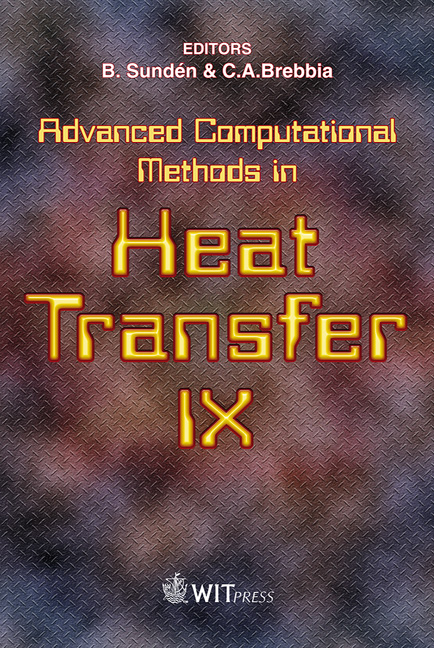Atwood Number Effects In Buoyancy Driven Flows
Price
Free (open access)
Transaction
Volume
53
Pages
10
Published
2006
Size
1,147 kb
Paper DOI
10.2495/HT060261
Copyright
WIT Press
Author(s)
M. J. Andrews & F. F. Jebrail
Abstract
Consideration is given to Atwood number (non-dimensional density difference) effects in buoyancy driven flows. Buoyancy driven (natural convection) flows may be treated as Boussinesq for small Atwood number, but as Atwood number increases (>0.1, i.e. large temperature differences) the Boussinesq approximation is no longer valid and the distinct \“bubble” and \“spike” geometry of Rayleigh– Taylor buoyant plumes is formed. Aside from asymmetry in the flow the Atwood number also affects key turbulent mix parameters such as the molecular mix, and heat transfer coefficients. This paper will present recent experimental work being performed in the buoyancy driven mix laboratory at Texas A&M University with air/helium as mixing components. Corresponding numerical simulations performed at Los Alamos are presented for the experiments, and future directions for the research discussed. Keywords: buoyancy, Boussinesq, Atwood number, natural convection. 1 Introduction This paper describes experiments and corresponding simulations to investigate non-Boussinesq effects at high Atwood (At) number (At ( ) ( ) 2 1 2 1 ρ ρ ρ ρ + − ≡ a non-dimensional density ratio) in buoyancy driven turbulence (Rayleigh-Taylor mixing). The Boussinesq assumption for buoyancy driven flows states that density difference effects need only be accounted for in the gravitational terms, and density may be taken as a constant elsewhere in the equations. At small Atwood number (At<<1) the Boussinesq approximation is valid, however, at large At (~1) it implies a symmetry to the flow that is contrary to the familiar bubbles and spikes of water falling out of a glass. Here we explore the limits of the Boussinesq approximation.Keywords
buoyancy, Boussinesq, Atwood number, natural convection.





